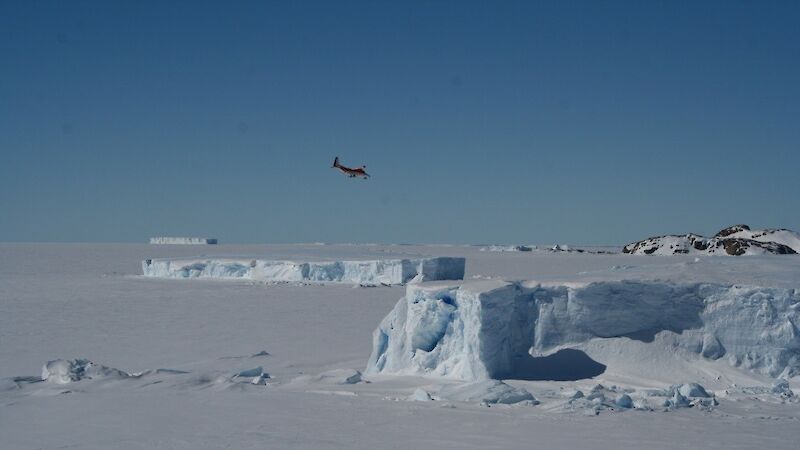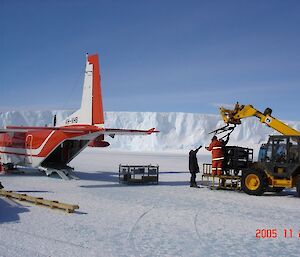Ginger and Gadget, the two aircraft chartered by the Australian Antarctic Division (AAD) to support its science programme in Antarctica, have had their first taste of serious deep field science since their flight from Hobart to Casey station on the Antarctic continent in late October.
Until then, the two had been busily ferrying expeditioners and cargo between the ship and stations. Nineteen expeditioners and over 2,500kg of cargo were transferred from Davis to Mawson in the changeover period from 9 to 14 November. The Casey dive programme (Australian Antarctic Magazine 8: 5, 2005) also benefited from personnel being transferred from Davis.
Named after two of Sir Douglas Mawson’s huskies, the CASA 212s have successfully operated on unprepared surfaces on sea ice in the vicinity of Sansom Island, Beaver Lake in the Prince Charles Mountains, and at the field site of the Amery Ice Shelf Ocean Research (AMISOR) project near Davis station.
The Amery Ice Shelf is the third largest in Antarctica, draining ice from the Lambert Glacier system.
As the ice drains into the ocean it melts or sometimes refreezes according to the salinity, density and temperature of the ocean. Understanding these processes will in turn help understanding of global ocean circulation and global warming.
The project will attempt to drill through 800m of ice to the area of water beneath the shelf, collecting data from the ice, sediments, water and sea floor.
VH-VHB (Gadget) flew to Casey station on 10 December in preparation for the arrival of Voyage 2, scheduled for 12 December.


